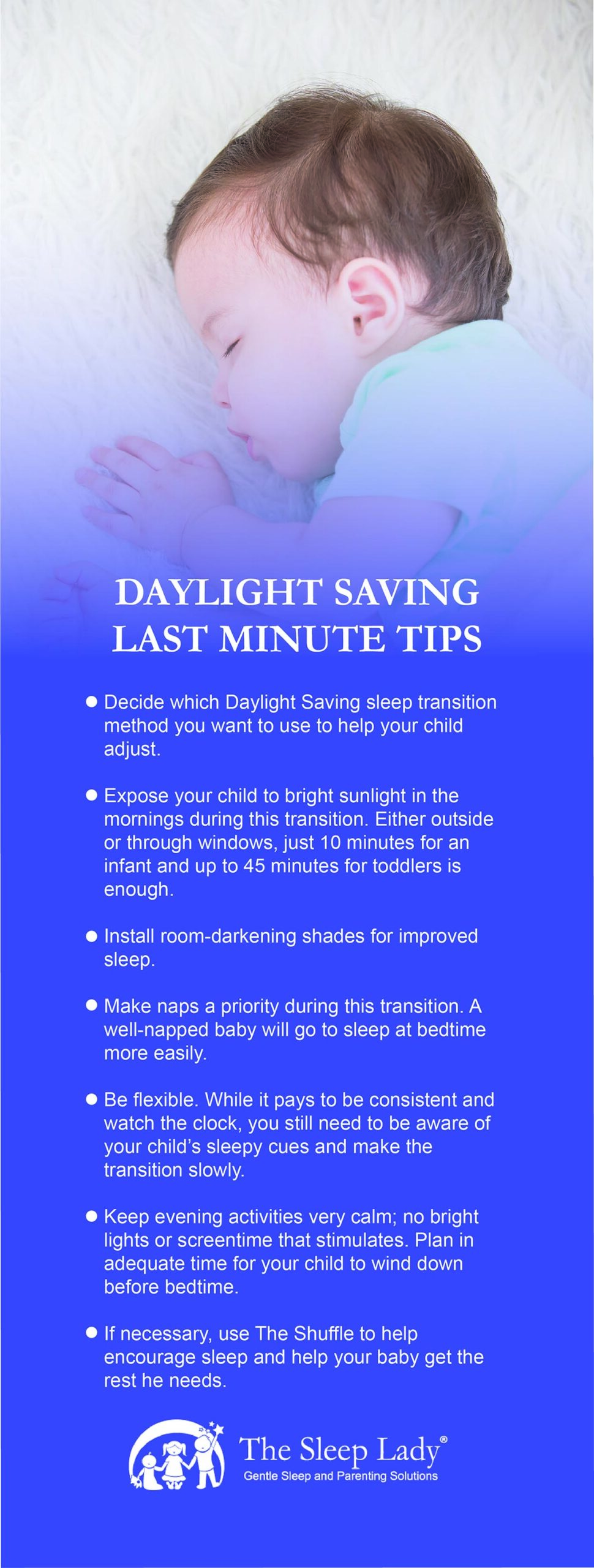In the wee hours of spring each year you may notice that it is getting lighter a bit earlier and inwardly shout “hooray!” I know that I am ready to put away the snow shovel and gloves and spot some spring bulbs coming up in the garden!
Another sign of spring that may take a little more adjustment is moving our clocks forward an hour.
Fun fact: Daylight Saving Time was established to take advantage of the longer daylight hours of summer and originally suggested by Ben Franklin in order to save money on candles!
You may not live by candlelight anymore, but most everyone is ready for more sunshine after a long winter!
Not everyone in the world observes Daylight Saving Time, so these Daylight Saving tips may not be applicable to you. You can check this list to see when Daylight Saving Time starts in your corner of the world.
Daylight Saving Time starts next weekend in the U.S. At 2:00 a.m. On Sunday, March 11th, 2018, we will turn our clocks ahead one hour. If you are in Europe, Daylight Saving Time will begin on March 25th, 2018.
Springing forward in time can be disorienting for some of us who keep to a rigid schedule. Even adults need a few tips for handling the change with ease.
Daylight Saving Time Tips for Adults
- Go to bed 15 minutes earlier than usual on the Thursday before DST begins.
- On Friday go to bed 30 minutes earlier than usual.
- On Saturday try to go to bed 45 minutes earlier than your usual bedtime (notice a pattern?).
- Eliminate all caffeine after 1:30 p.m. this week in order to make it easier to go to bed earlier.
- If possible, also avoid alcohol this weekend, which negatively affects sleep.
Now that you have your plan in place you can think about preparing your baby or toddler for the challenge of a new sleep schedule. Don’t worry. There are a couple of ways to tackle this transition and you can choose the one that suits your style and your child’s needs the best.
RELATED: Spring Forward: Daylight Saving Sleep Tips
Prepare For The Time Change
One of the best ways to prepare your child for Daylight Saving Time is to make sure they are getting good naps for the few days before the time shift. This will help take the edge off of the discomfort associated with the upcoming changes. You want to set them up for success by ensuring they are well-napped so that they are not extra cranky headed into this weekend.
You’ll need to decide how to help your baby transition to Daylight Saving Time. I recommend that you choose between two transition methods.
“Do-Nothing”
If you have an early-riser this is a great method for you! Just act like it’s a normal day.
Follow your daily routine according to the clock, but everything will be pushed ahead one hour.
Here are the specifics:
- On Saturday evening simply move your clock ahead an hour after your little one is in bed. Do yourself a favor and change EVERY clock in the house at the same time. Sleep-deprived parents need to take extra precautions to help this change work as smoothly as possible.
- Proceed with your normal day on Sunday. If you have an early-riser he should wake up at a more acceptable hour.
- Consider waking your baby or child by 7:30 a.m. or 8:00 a.m. to help them feel “tired” enough to go to bed earlier that night. This will help move naptimes earlier too.
- Keep meals, snacks, and naps at the normal times you always do. You may need to watch the clock to not fall behind at first.
- Remember that your baby will be going to bed at their “regular time” according to the new clock. Of course, some babies will not seem particularly tired because their body is saying it is only 6:00 p.m. and not 7:00 p.m.
Be flexible and understanding. If needed, utilize The Shuffle for a few days at bedtime to help your baby fall asleep at the new bedtime.
The good news about this transition method? This method of adjustment seldom takes more than a week!
RELATED: Spring Ahead, Fall Back…On Sleep
Split the Time Change “Difference”
For some children (especially young babies), making the one-hour change will be overwhelming. Maybe they already have an early bedtime or they are not napping well. You know your child and may even dread this next week. For you, I suggest a modified approach that will bridge the gap and minimize a struggle at bedtime.
This method pushes the bedtime back only half an hour at a time, giving the child some time to catch up. My example is based on a usual 7:00 p.m. bedtime. You can adjust the numbers to suit your needs.
Here are the specifics:
- About a week before the time change, begin putting your child to bed 15 to 20 minutes earlier, moving the time back every few days until you reach a full hour — a week ahead usually works best. So, if your child has a 7:00 p.m. bedtime, you want to begin with bedtime at 6:40 p.m. ,then 6:20 p.m., then 6:00 p.m.
- Be consistent as possible with your baby’s food and sleep schedule. This means that you need to shift all meals, snacks, and naps a half hour earlier as well. Watch the clock to stay on the new schedule of 30 minutes earlier. Don’t forget to wake your child a bit earlier to help with this transition schedule.
- After about a week, your child should be back at their 7:00 p.m. bedtime.
- Adjust all meals, snacks, and naps to fit the “new” schedule on the same day that you shift to your child’s new, fully-adjusted bedtime.
The goal is to get back to your child’s normal bedtime and daily routine. It may take as long as a week, though. This is because your child’s inner clock is fighting to stay on Standard Time.
I hope that these ideas help you make a smooth transition to the new time this coming week.





